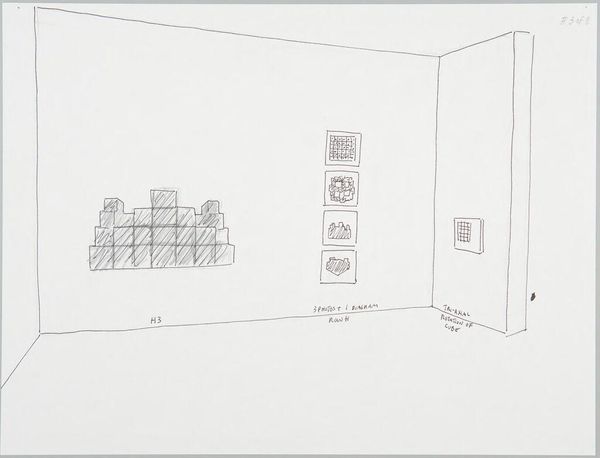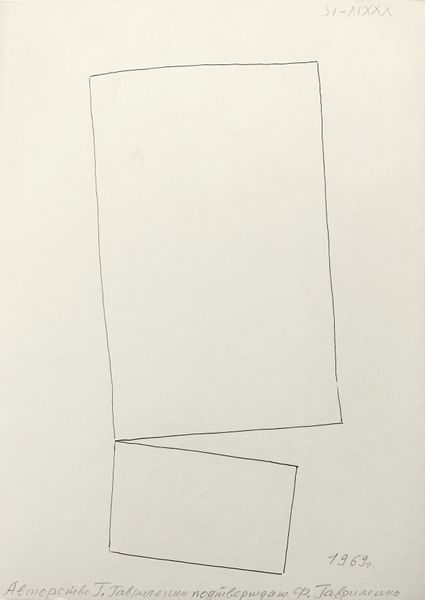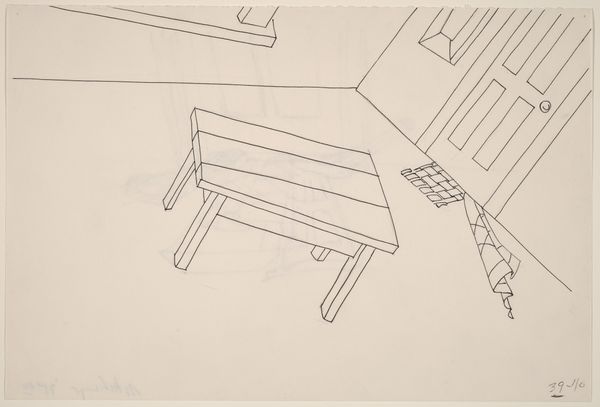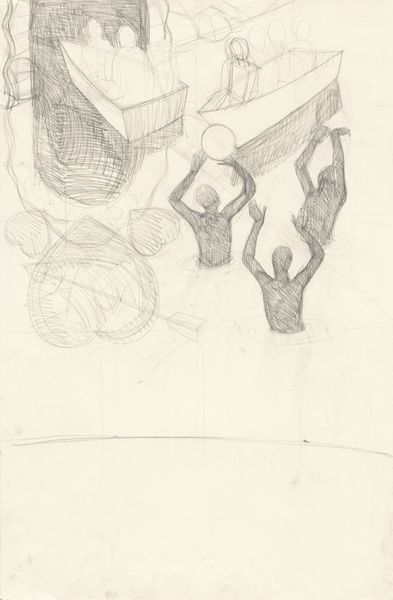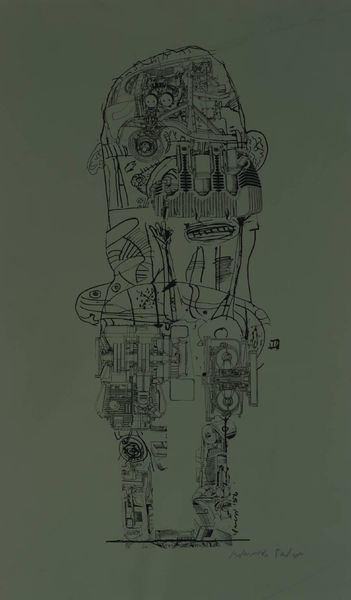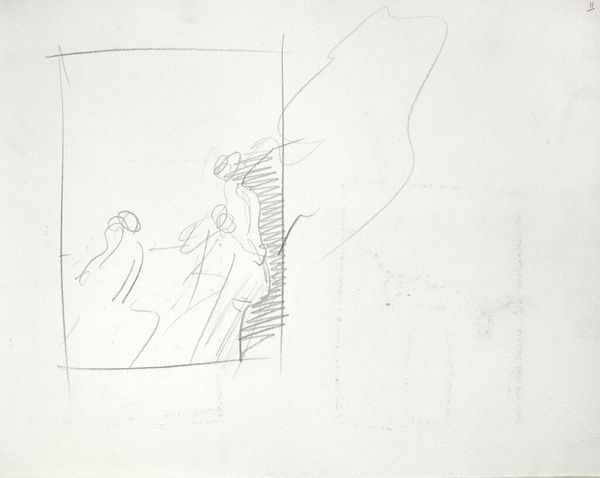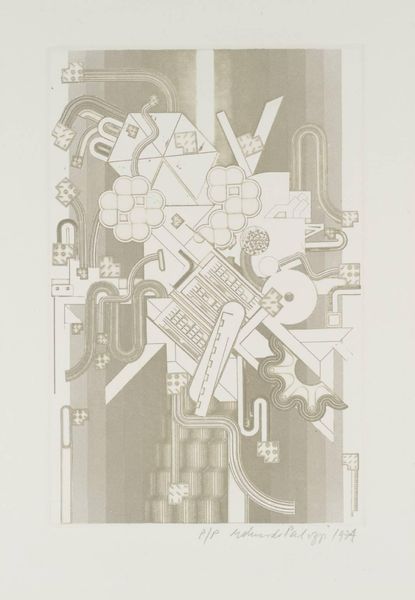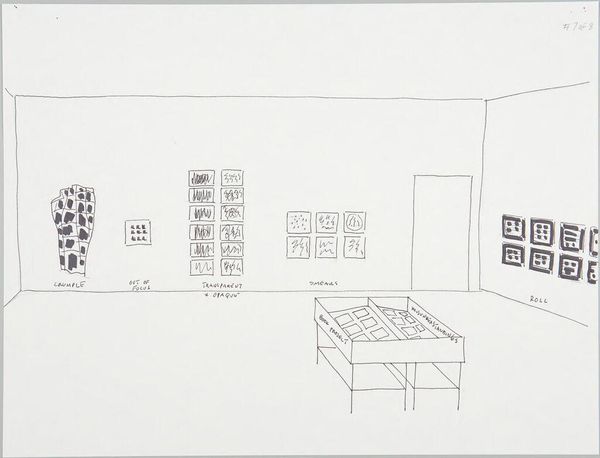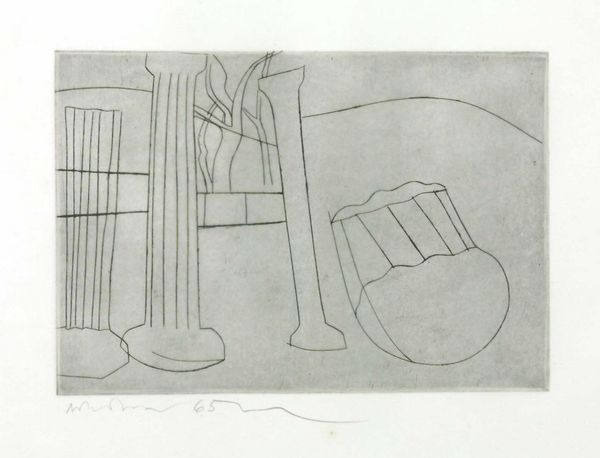
Copyright: © Michael Craig-Martin | CC-BY-NC-ND 4.0 DEED, Photo: Tate
Curator: Michael Craig-Martin’s “Reading with Globe” presents everyday objects in his signature, minimalist style. Editor: It strikes me as a wonderfully mundane still life, almost a deconstruction of domesticity. The bare lines are almost architectural. Curator: His work often explores how we perceive and assign meaning to mass-produced items. He highlights the inherent art in these objects, questioning consumer culture. Editor: Yes, it's about the materials themselves, the industrial processes, the labor behind making a ladder, a filing cabinet, or even an open book. There's an emphasis on production. Curator: Precisely. And by presenting them in this stark way, he invites us to consider their function and cultural significance. It’s a democratic approach to image-making, wouldn’t you say? Editor: I agree; it democratizes the mundane, forcing us to see these objects as more than just commodities, but as representations of labor and materiality. Curator: A compelling reminder to consider the everyday objects that shape our lives. Editor: Indeed. The simplicity encourages us to look closer at the world of production that surrounds us.
Comments
tate 3 months ago
⋮
http://www.tate.org.uk/art/artworks/craig-martin-reading-with-globe-t03102
Join the conversation
Join millions of artists and users on Artera today and experience the ultimate creative platform.
tate 3 months ago
⋮
Reading with Globe is a drawing made directly onto the wall by tracing over a projected image using self-adhesive black tape. The drawing can be made at any size, according to the discretion of the gallery. The everyday objects brought together in the drawing are taken from a ‘dictionary’ of images assembled over the years by the artist. Although the smallest item is placed in the foreground, large and small are clustered so closely together that differences in scale seem deliberately confused. Gallery label, July 2008
